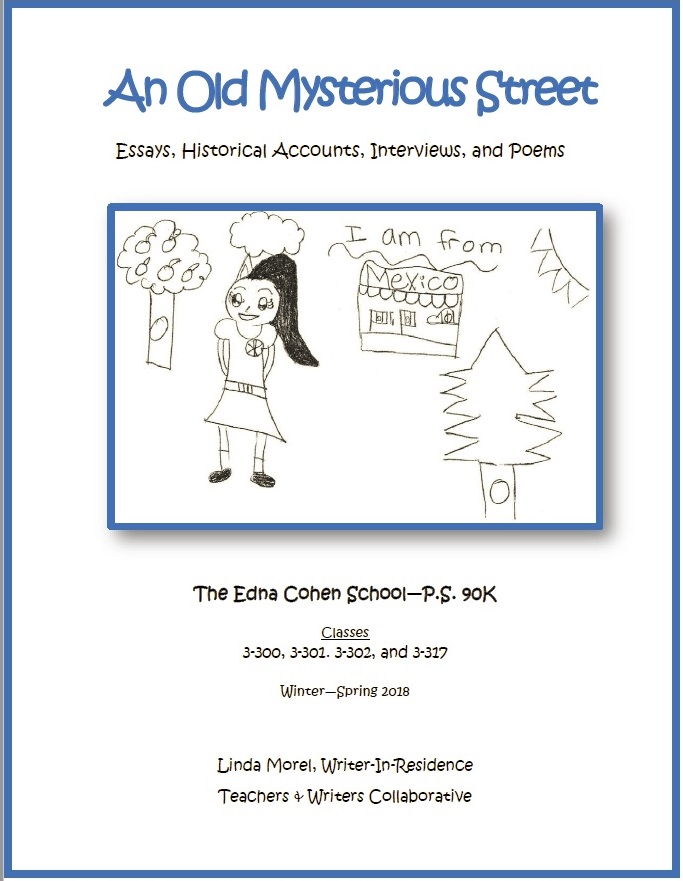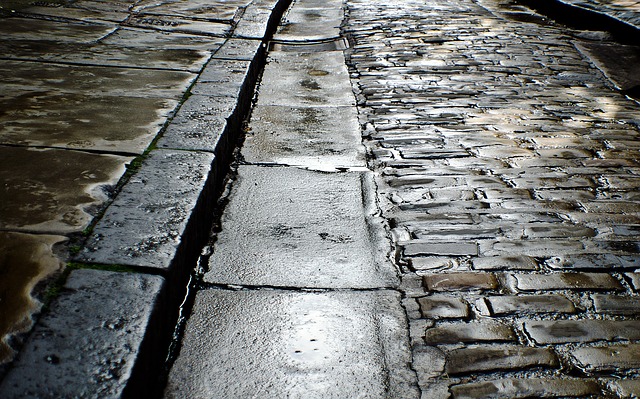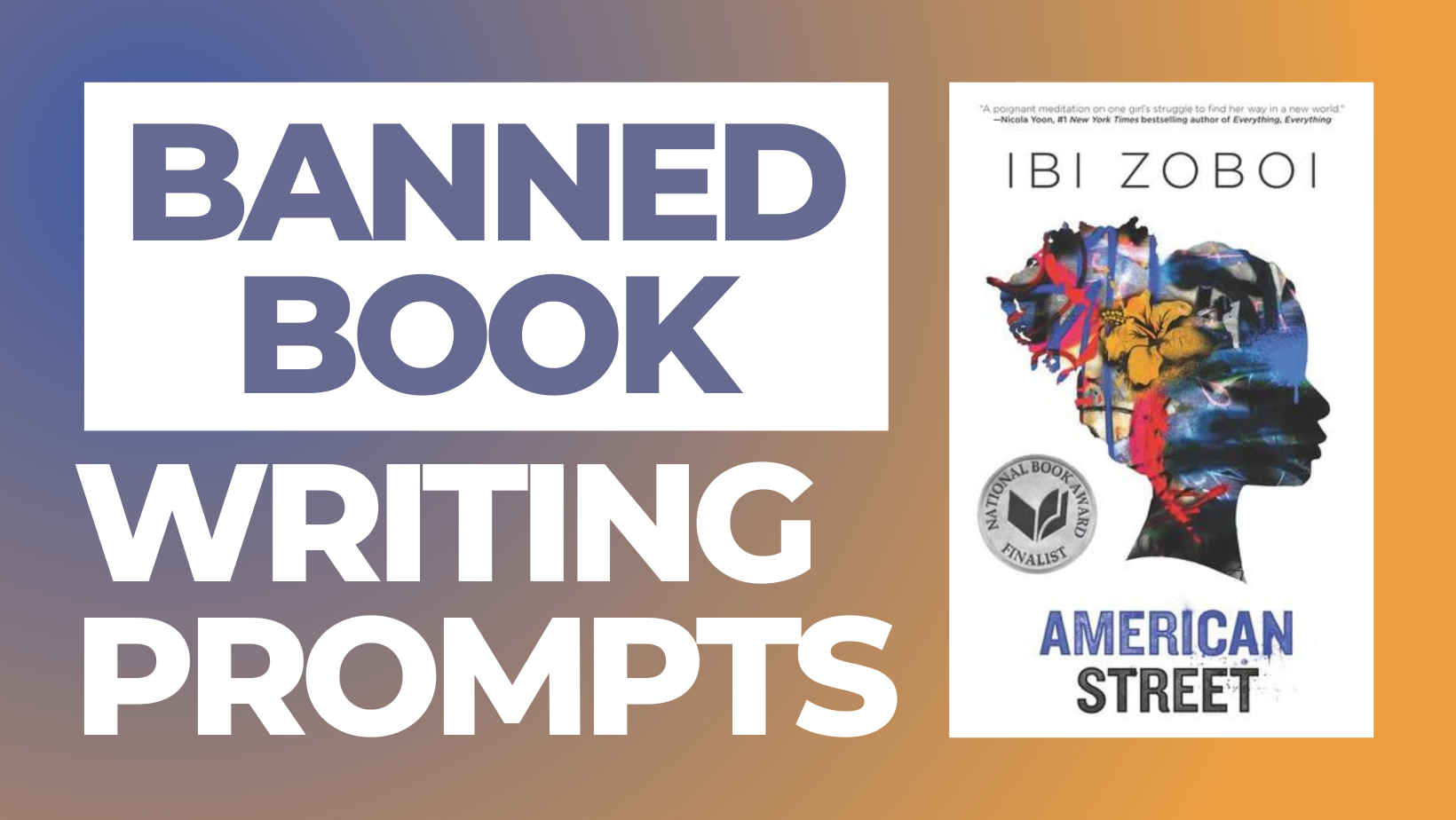I was honored to be invited to P.S. 90K to teach a revolutionary idea to third grade students—combining nonfiction writing with research skills! I immediately decided to make Researching Your Way Into Creative Writing the program’s theme.

During the 22 workshops in this program, I wanted to show students the limitless places where research material abounds. Source material was studied online, from interviews, by comparing maps and photographs, from a historical novel, on food packaging, from a memoir, in print advertising, and in nonfictional poetry. Good researchers are really detectives, noticing what they see, hear, smell, feel, touch, and even taste as they set out to learn more about the world.
My goal was to teach research tools that students could use to gather any type of information from any source for the rest of their lives. These are techniques used by researchers in the real world, whether they be writers, scientists, historians, lawyers, political pollsters, PhD. candidates, or market researchers.
At every workshop, I asked students The Four Big Questions of Research:
- What do you see? Meaning what are you gathering information on today?
- What do you already know about it? You know more than you think.
- What makes your curious about it? Every research project starts with a question.
Next─You conduct research.
- What did you learn from your research?
As you read An Old Mysterious Street, you will see evidence of these four questions in student writing.
During writing workshops, I exposed students to a wide variety of source material where they gleaned valuable information about the present and the past. I brought in a poem about snow, which elegantly extolled the most important elements about these miracle crystals.
I asked students to break into pairs and interview each other about what they do for fun. In the next workshop, I distributed an interview of Mrs. Chapman, a former slave, conducted by the State of Tennessee during the 1930’s.
From author Ralph Fletcher’s memoir, Marshfield Dreams, about his 1950’s childhood in Massachusetts, students examined a map of the woods behind his house and analyzed what they learned about his life back then.
Embedded in many pieces of writing is an attitude or viewpoint. I explained that readers should always be on the lookout for bias and to recognize it when they see it. Two pieces of writing exemplified bias: a poem about mice and an essay trashing litter.
Because self-reflection is an underrated aspect of research, I encouraged students to write I Am From poems, in which they looked inside themselves and shared the people, places, objects, games, and spirituality of their lives.
P.S. 90K students are growing up in a unique part of New York City, which is why I devoted four workshops to researching Coney Island. Most students were unaware of the history that took place here. For that reason, I asked them to compare two photos of Coney Island: one taken around 1900 and one taken in recent years. Next, they read a passage from Alice Hoffman’s historical novel The Museum of Extraordinary Things about life in this seaside resort 100 years ago.
Because the internet has revolutionized the way people gather information, I felt it imperative to offer students a workshop on researching online. They used Wikipedia as their source for information on ice cream. Needless to say, they were amazingly adept at zooming around on that website.
Because P.S. 90K emphasizes nutrition, I brought in a box of Triscuit crackers and students researched whether or not this popular snack food is healthy to eat.
In the past 19 years, I’ve taught at many schools through Teachers & Writers Collaborative. However, P.S. 90K stands out because of the passion of its teachers. Our collaboration produced this stunning anthology. I find working with third grade students to be deeply satisfying, because they are in touch with their creative spark and are eager to share their work aloud.
While this writing program was research based, An Old Mysterious Street runs the gamut from factual reporting to provocative essays, personal experiences, and heartfelt poetry. Like talented writers throughout the ages, these student authors have shared their world. Taken as a whole, An Old Mysterious Street tells us something meaningful about their school and homes, the people they love, and Coney Island, with its daring rides, sandy shore, sparkling surf, and boardwalk of dreams.
Linda Morel, Writer-in-Residence
June 2018
Featured Writing
An Old Mysterious Street
by Mishaal Adnan (3rd grade)From the map in the memoir, Marshfield Dreams, by Ralph Fletcher.
On the map of Acorn Street, I see an unexplored territory, Ale’s Woods, an old shack, an old rock wall, old buried trash, a swamp, the tallest tree, more trees, rocks where children smashed bulbs, tripods, Ralph Fletcher’s house, an uprooted tree, the mud puppy place, a small stream, Goldie’s grave, Sophie and Arthur Pratt’s house, Andy Hunt’s house, a vegetable garden, a chicken coop, Steve Fishman’s house, a boulder, a dirt driveway, a small stream, Larry Waters’s house, and a clearing.
I learned the author lived in an old place where people used to live. Native Americans lived there too. This place was in the country. Ralph Fletcher lived in a place with nature.
I would not prefer to live on Acorn Street, because the place does not look exciting. I would like to live in Coney Island, because there are rides and the beach. It is fun here in Coney Island.



